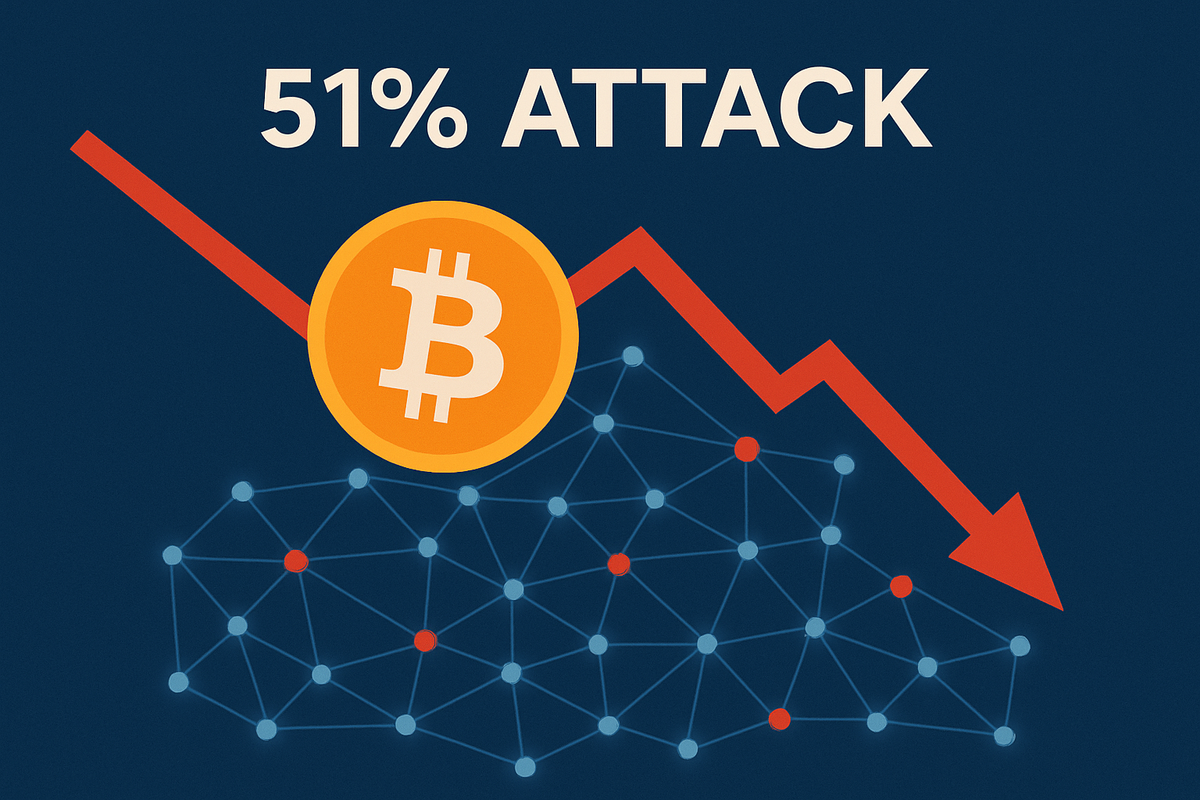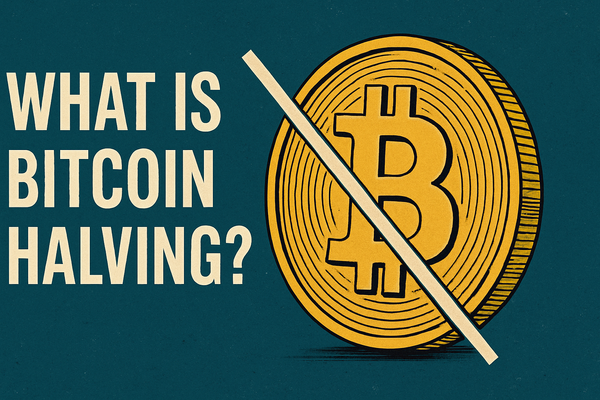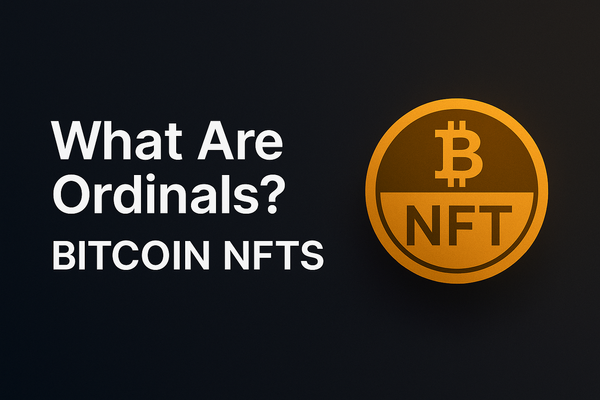What is a 51% Attack? How Blockchain Networks Can Be Compromised
Discover what a 51% attack is, how it threatens blockchain networks, real-world examples like Ethereum Classic, and what protects against it.

In the world of blockchain, decentralization is often hailed as the ultimate safeguard — a trustless, tamper-proof system where no single entity holds power. But what happens when someone does gain majority control? That’s where the concept of a 51% attack comes in — a rare but serious vulnerability that threatens even the most secure cryptocurrencies.
A 51% attack occurs when a single miner or group of miners gains control of more than half of a blockchain network’s computational power, also known as its hash rate. With this majority, they can disrupt the integrity of the system — reversing transactions, halting transfers, and spending the same coins twice, a scheme known as double spending.
Although these attacks are difficult and expensive to carry out, they’ve occurred multiple times in the wild — often targeting smaller, less-secure blockchains. For investors, developers, and users alike, understanding this kind of attack is essential to assessing the risks and resilience of any crypto project.
Let’s dive into how these attacks work, why they happen, and what can be done to prevent them.
How 51% Attacks Happen: Understanding Blockchain Consensus
At the heart of any blockchain is a system called consensus — the method by which thousands of independent computers agree on a single, truthful version of history. This process ensures that transactions are legitimate, blocks are properly added, and no single participant can manipulate the system.
Most traditional blockchains, like Bitcoin and Ethereum (before it switched to Proof of Stake), use a method called Proof of Work (PoW) to achieve consensus. In PoW, miners compete to solve complex mathematical puzzles. The first one to solve it gets to add a new block to the chain and earn a reward.
The security of a PoW blockchain depends on one key assumption: no individual or group controls the majority of the network’s total computing power (known as the hash rate). As long as this is true, the blockchain remains tamper-proof because rewriting history would require an impossible amount of computational effort.
However, if someone does gain control of more than 50% of the hash rate, they can override the honest network — leading to a 51% attack. With this power, attackers could create an alternate version of the blockchain where their fraudulent transactions are accepted, while real ones are ignored or reversed.
In short, blockchain consensus is like the immune system of the network. It defends against fraud and ensures trust without needing a middleman. But if the immune system is overpowered — if a single entity becomes stronger than the rest combined — the system’s defenses can collapse.
What Happens During a 51% Attack?
When an attacker controls more than half of a blockchain’s computing power, they gain an unfair advantage over honest participants. This control allows them to manipulate how the blockchain records transactions in ways that can seriously damage trust in the network.
Here are the main things an attacker can do during a 51% attack:
- Double Spending:
The attacker can send cryptocurrency to a merchant or exchange, receive goods or services, and then secretly create a longer blockchain that excludes that transaction. When their private chain overtakes the honest one, the original transaction disappears — and the attacker keeps both the coins and the goods. This is the most dangerous and well-known outcome of a 51% attack. - Censoring Transactions:
The attacker can selectively block or delay transactions from others. They might refuse to confirm transactions they don't like, effectively freezing funds and damaging the usability of the network. - Halting Block Confirmations:
By rejecting blocks mined by honest participants, the attacker can prevent new blocks from being added to the blockchain, stopping the flow of transactions altogether.
To picture it simply:
Imagine you're playing a board game where everyone takes turns following the rules. Suddenly, one player becomes the game master — they can erase moves they don't like, play twice when it's convenient, and block others from winning. The fairness of the game collapses.
Important clarification:
Even in a 51% attack, the attacker cannot:
- Steal coins directly from wallets.
- Create coins out of thin air.
- Rewrite the entire history of the blockchain beyond a short window.
Their power is limited to manipulating recent transaction history, not controlling the private funds of users.
Real-World 51% Attack Examples
While 51% attacks sound theoretical, they have happened multiple times — mostly targeting smaller blockchains with lower security. Let’s look at a few notable cases.
Ethereum Classic (ETC)
One of the most famous 51% attacks struck Ethereum Classic in 2019. Attackers reorganized the blockchain, allowing them to double-spend over $1 million worth of ETC across several transactions. Shockingly, Ethereum Classic suffered multiple attacks over just a few months, highlighting how vulnerable lower-hashrate networks can be to rented mining power.
Bitcoin Gold (BTG)
Bitcoin Gold, a fork of Bitcoin, was attacked in 2018. Attackers double-spent about $18 million worth of BTG by exploiting the network’s relatively low mining power. Exchanges that didn’t wait for enough confirmations were hit hardest, reinforcing the importance of longer confirmation times when dealing with weaker chains.
Verge (XVG)
Verge experienced a series of 51% attacks starting in 2018. Exploiting bugs in the Verge blockchain, attackers manipulated timestamps and algorithms to mine new blocks at virtually no cost. Millions of dollars’ worth of XVG were stolen across multiple incidents, severely damaging Verge’s reputation.
Why These Attacks Happened:
In each case, attackers took advantage of:
- Low hash rates: Easier to overpower the network.
- Rented mining power: Services like NiceHash allowed attackers to "buy" enough power temporarily without owning expensive hardware.
- Lower network value: The potential rewards outweighed the cost of the attack.
The takeaway?
Smaller blockchains are far more vulnerable to 51% attacks, especially when it’s cheap to rent the necessary power and execute the attack before the network can react.
Why Certain Coins Are More at Risk
Not all blockchains face the same level of risk when it comes to 51% attacks. Some are much easier targets than others. But what makes a blockchain more vulnerable?
Low Hash Rate
The biggest factor is the hash rate — the total computational power securing the network.
A lower hash rate means it takes less effort and money for an attacker to control more than 50% of the network.
In contrast, major networks like Bitcoin have extremely high hash rates, making it astronomically expensive to attempt a 51% attack. But smaller coins, especially niche forks or experimental projects, often lack enough mining participation to deter attackers.
Rented Mining Power
Attackers don’t always need to own all their mining equipment.
Platforms like NiceHash allow people to rent hash rate from others, making it possible to launch a large-scale attack with minimal upfront investment.
This “hash rate for hire” model lowers the barrier to attacking smaller blockchains even further.
Low Market Value
If a cryptocurrency’s total market value is small, the rewards of a successful attack often outweigh the cost of renting or buying the necessary power.
An attacker might spend tens of thousands of dollars but steal assets worth hundreds of thousands — a very tempting trade-off.
Weak Network Participation
Finally, smaller or neglected coins often have fewer active participants: fewer nodes, fewer miners, and less community monitoring.
This makes it harder to detect and respond to attacks quickly, giving bad actors more time to exploit the system.
The bottom line?
Blockchains with a low hash rate, small market cap, and poor community engagement are prime targets for 51% attacks — especially in a world where mining power can be rented with just a few clicks.
Can 51% Attacks Be Prevented?
Although 51% attacks are a real threat, blockchain developers and communities have developed several strategies to reduce the risks and make attacks economically or technically impractical.
Economic Disincentives
The bigger and more valuable a network is, the less incentive there is to attack it.
For example, attacking Bitcoin would cost billions of dollars in mining equipment and electricity — and would destroy the very value the attacker is trying to profit from.
In short: the cost of attacking needs to outweigh any potential rewards.
Proof-of-Stake (PoS) Systems
Many modern blockchains, like Ethereum (after its Merge upgrade), have moved away from Proof-of-Work toward Proof-of-Stake (PoS) consensus models.
In PoS, validators must lock up coins (stake them) to participate.
If they attempt malicious behavior, their stake can be slashed — permanently destroying their investment.
This makes attacks financially suicidal rather than profitable.
Checkpointing and Finality
Some smaller blockchains use checkpointing, where certain blocks are "locked in" after they’re confirmed by trusted nodes.
Others implement finality gadgets that make it mathematically impossible to revert finalized transactions after a certain number of confirmations.
Both methods limit how much of the blockchain’s history an attacker can rewrite, reducing the risk of devastating double-spends.
Hashrate Monitoring and Alert Systems
Some projects have set up hashrate monitoring tools that watch for unusual spikes in mining power.
If a sudden rise occurs — suggesting a potential rented hash attack — the network can respond quickly by pausing operations, delaying high-value transactions, or alerting users and exchanges.
In short:
While no system is completely attack-proof, modern blockchains combine economic incentives, technical safeguards, and community vigilance to make 51% attacks extremely unlikely on well-secured networks.
Why 51% Attacks Don’t Mean Total Collapse
Hearing about 51% attacks can sound alarming, but it's important to understand that they don’t mean the complete destruction of a blockchain.
Even when attackers control a majority of mining power, their abilities are limited. Here’s what they can and cannot do:
What They Can Do
- Reverse their own recent transactions (leading to double spending).
- Delay or block certain transactions.
- Disrupt network trust temporarily.
What They Cannot Do
- Steal coins directly from wallets.
- Alter or forge smart contracts.
- Rewrite the entire blockchain history far into the past.
In most cases, 51% attacks affect recent transactions — usually within a short window (a few blocks or hours). Long-established records remain safe, and the community can often coordinate responses like hard forks or protocol changes to fix damages.
It’s also worth noting that major blockchains like Bitcoin and Ethereum (post-Merge) have security levels so high that a 51% attack would cost billions of dollars — making it virtually impossible.
In short:
While a 51% attack can cause serious temporary damage, it doesn't allow attackers to steal funds or destroy the blockchain entirely. Strong communities, vigilant developers, and sound economic design make recovery not just possible, but likely.
What is a 51% Attack? FAQ
A 51% attack happens when someone gains majority control of a blockchain's computing power. This allows them to rewrite recent transaction history and double-spend coins, but not to steal from wallets or alter long-term blockchain records.
No. Even during a 51% attack, attackers cannot access or steal your coins directly from your wallet. They can only manipulate recent transaction confirmations on the blockchain.
No. Bitcoin has never experienced a successful 51% attack. Its extremely high hash rate makes such an attack financially and logistically impossible with current technology.
It’s very unlikely on major blockchains like Bitcoin or Ethereum (after the Merge). However, smaller, lower-hashrate blockchains can still be vulnerable, especially if mining power can be rented cheaply.
Smaller blockchains often have fewer miners, lower hash rates, and smaller market values. This makes it cheaper and easier for attackers to gain majority control, especially if they can rent mining power.





